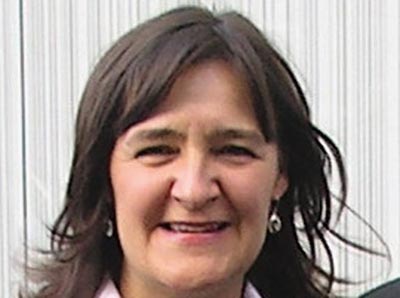We feel that it’s fair to say that 2018 has been the year of the leg. In recent years, there has been a drive to tackle pressure ulcers. The problems associated with pressure ulceration have been addressed head on through audit, education and promotional campaigns to drive forward harm-free care in terms of pressure ulceration. The impact is clear; incidence of pressure ulcers is, in the main, decreasing (NHS Safety Thermometer, 2018).
Arguably, less attention has been focused on the care of patients with leg ulcers or lower limb problems. Despite being one of the most commonly encountered wounds in the UK population (Ritchie, 2017), for too long these members of our community have been overlooked. But, we believe that times are changing. This year has seen the launch of the #legsmatter campaign, and this, coupled with emerging new research and guidance on good practice and endorsements by leaders in the leg ulcer field, means that legs are firmly on the agenda.
It’s time to challenge the culture of passivity in leg ulcer care (Hardy, 2016) and the launch of #legsmatter has sparked a call to arms for many who feel passionate about improving care for patients with lower limb problems. No longer can the days of waiting weeks on end for an ankle brachial pressure index (ABPI) assessment (Guest et al, 2017), or routinely applying light compression go on — it’s time to get proactive (Hardy, 2016).
Arguably, less attention has been focused on the care of patients with leg ulcers or lower limb problems. Despite being one of the most commonly encountered wounds in the UK population (Ritchie, 2017), for too long these members of our community have been overlooked. But, we believe that times are changing. This year has seen the launch of the #legsmatter campaign, and this, coupled with emerging new research and guidance on good practice and endorsements by leaders in the leg ulcer field, means that legs are firmly on the agenda.
It’s time to challenge the culture of passivity in leg ulcer care (Hardy, 2016) and the launch of #legsmatter has sparked a call to arms for many who feel passionate about improving care for patients with lower limb problems. No longer can the days of waiting weeks on end for an ankle brachial pressure index (ABPI) assessment (Guest et al, 2017), or routinely applying light compression go on — it’s time to get proactive (Hardy, 2016).
 Having the courage to compress is vital if we are to change the default button of reduced compression.
Having the courage to compress is vital if we are to change the default button of reduced compression.But, individuals can only have the courage within a system that believes that change is not only necessary, it is possible. There is a belief in nursing that patients do not like or tolerate high compression. This belief comes through time and time again in the literature and workshops. Patient compliance is often the first thing that nurses cite as the cause for poor healing. That nursing provides inconsistent care or poor bandaging techniques is rarely mentioned. Yet, we know this is a fact of our lives and the lives of our patients.
Nurses need courage to look at the issues that patient’s face and be honest that they may not have had great care to date — that a patient’s need of individualised or consistent care have not actually been met, and that this passivity and acceptance has led to actual harm. Inadequate compression does not manage oedema resulting in dripping legs, excoriation and terrible pain. How has this been normalised? But, this is preventable. It does not have to be like this. This harm creates major problems for the workforce; non-healing simply gives the nurses more work.
Reduced compression is simply ineffective treatment for the majority of patients; at the very least it slows their healing time. Only ischaemic patients should receive reduced compression (around 8% of the leg ulcer population). Everyone else needs high or extra high compression: this is evidence-based medicine and should drive out the fear factor. We need to start referring to light compression as sub-optimal, weak, ineffective and simply not evidence-based. As clinicians, we need to know more about the amazing treatment we are promoting, get excited about its healing properties and make sure that everyone who applies it does the job well. This will give nurses the courage to compress and enable better conversations so that we help patients tolerate the therapy.
Alison Hopkins MBE, Chief executive, Accelerate CIC
However, despite good intentions and the fact that most nurses only want the best for their patients, two camps are emerging.
In the first camp sit those who don’t have the courage to compress (yet). This has arisen because of a combination of issues, including:
In the first camp sit those who don’t have the courage to compress (yet). This has arisen because of a combination of issues, including:
- An inexperienced community workforce
- Cuts in continued professional development (CPD) budgets (Merrifield, 2017)
- Decreasing numbers of specialist practitioner qualified district nurses to lead care (Queen’s Nursing Institute [QNI], 2015).
All of this has led to many staff not having the courage to compress. We would argue that this is grounded in a lack of confidence and competence. Observations from our own clinical areas indicate that frequently community nursing staff prefer to ‘err on the side of caution’. This routinely results in patients receiving so-called ‘lighter compression’ inappropriately, which will, we know, delay healing or prevent healing altogether.
The reasons for these issues are varied and multidimensional. Observations from clinical practice would suggest that healthcare professionals are often confused, particularly around which compression systems are most appropriate. This, coupled with fears that bandaging too tightly will cause harm, has led to a culture of over cautious treatment.
The reasons for these issues are varied and multidimensional. Observations from clinical practice would suggest that healthcare professionals are often confused, particularly around which compression systems are most appropriate. This, coupled with fears that bandaging too tightly will cause harm, has led to a culture of over cautious treatment.
Fear of blame attached to causing unintentional harm may mean that nurses do not always have the courage to compress. Paradoxically, failing to apply optimum levels of compression for that individual does, in itself, cause harm. However, this is not the intention of nurses when treating leg ulceration. From a legal perspective, acting with maleficence means that practitioners are acting with the intention to cause harm, yet a lack of confidence to compress is not the same as intending to harm. Moreover, to act with the ethical principle of non-maleficence means that we act with the intention to ‘avoid, or minimise harm’ (Beauchamp and Childress, 2001).
Ultimately, it is our intention, as nurses, to act with beneficence and strive to do the utmost good for our patients. Nevertheless, if we fail to exercise the virtue of courage and subsequently do not compress legs when clinically needed, a negligence claim may result. A lack of knowledge, courage or confidence to compress is not defensible in a court of law, should harm to the patient ensue.
 I would argue that when faced with a patient who has a leg wound, the default position should be ‘any reason not to compress’, as opposed to ‘should I compress?’ From clinical experience, it is not only the venous leg ulcer that benefits from compression, but also the patient with a haematoma, cellulitis, traumatic wound, surgical excision, harvesting of saphenous veins, post knee replacement, skin graft, gravitational oedema... the list continues, and I think you get my meaning.
I would argue that when faced with a patient who has a leg wound, the default position should be ‘any reason not to compress’, as opposed to ‘should I compress?’ From clinical experience, it is not only the venous leg ulcer that benefits from compression, but also the patient with a haematoma, cellulitis, traumatic wound, surgical excision, harvesting of saphenous veins, post knee replacement, skin graft, gravitational oedema... the list continues, and I think you get my meaning.What has happened with the teaching of compression therapy that we have made practitioners so afraid to apply it? Look at our European colleagues who apply much higher levels of compression routinely with effective outcomes, while many practitioners in the UK dabble with reduced compression. Yes, we understand the likelihood of reduced compression causing any trauma is slim, but for many patients it remains sub-optimal treatment. You wouldn’t administer half a therapeutic dose of medication, so why half a therapeutic level of compression.
There are multiple choices for compression now, from Velcro wrap garments, to hosiery kits, to various multi-component bandages. The range of products may be part of the problem — as well as providing effective solutions, it is difficult to keep abreast of all and to know what to choose and when. However, leg assessment algorithms can help with product selection and decision-making regarding compression, as can online training modules, which are becoming increasingly available. Leg ulcer management modules are available at many universities, do the training, then please, please apply the compression!
Jane Todhunter, Vascular nurse practitioner, North Cumbria University Hospitals
In camp two are the community nurses working within leg ulcer care who frequently find themselves wedged between a proverbial ‘rock and a hard place’. The first author recently spent time in a proactive clinic where clinicians felt empowered and safe to think innovatively about compression therapy for wound and lymphoedema care. This is congruent with NHS England’s ‘What matters to you’ approach (2016) and their ‘Rightcare’ drive (2018). Such a clinic epitomised the possibilities of new and advancing practice in leg ulcer care and the feeling of empowerment.
However, deviating from often outdated guidelines, trust policies and protocols can be frowned upon. Veering off course from the wound care formulary requires explanation, and we have observed within the clinical arena that fears exist that, should any unintentional harm happen to the patient, then the nurse who has walked a different path could find herself in trouble.
However, deviating from often outdated guidelines, trust policies and protocols can be frowned upon. Veering off course from the wound care formulary requires explanation, and we have observed within the clinical arena that fears exist that, should any unintentional harm happen to the patient, then the nurse who has walked a different path could find herself in trouble.
This, as we alluded to earlier, leaves the nurse in between that proverbial rock and a hard place. We should remember, however, that if the decision to act outside of the evidence-based clinical guidelines were to be called into question, the nurse’s judgement would again need to be rationalised.
Within ‘The Code’ (Nursing and Midwifery Council [NMC], 2015), nurses are obliged to practise effectively and preserve safety, while prioritising people and acting with professionalism and trust. It is their responsibility to be accountable for
both their acts and omissions and mindful of their duty of care to their patients. Within the framework of human rights, Article 3 of the Human Rights Act (HRA) 1998 dictates that everyone has the right to be free from torture and inhuman treatment. Arguably, a breach in the fundamental rights of the patient, along with our duty of care, will be evident if the decision to compress or not to compress is inappropriate and incorrect.
Within ‘The Code’ (Nursing and Midwifery Council [NMC], 2015), nurses are obliged to practise effectively and preserve safety, while prioritising people and acting with professionalism and trust. It is their responsibility to be accountable for
both their acts and omissions and mindful of their duty of care to their patients. Within the framework of human rights, Article 3 of the Human Rights Act (HRA) 1998 dictates that everyone has the right to be free from torture and inhuman treatment. Arguably, a breach in the fundamental rights of the patient, along with our duty of care, will be evident if the decision to compress or not to compress is inappropriate and incorrect.
The aim of this piece is not to cause fear — please don’t mistake what we are saying here. But, rather to encourage community nurses working in the leg ulcer field — encourage them to seek out the education they need to give them the courage to care and compress, and to care for community patients proactively.
Whichever camp you currently find yourself sitting in within this narrative, proactive leg care is vital — so, shall we begin?
 This year there has been increased focus on the management of leg ulcers and healing rates. Perhaps this is due to unbelievably high treatment costs, particularly if managed inappropriately. There is definitely an issue of courage around initially applying compression. However, I feel the key to overcoming this has to be effective education with a good ongoing support network. Understanding the need for holistic patient assessment is vital, and underpinning knowledge and continued support will facilitate appropriate management plans. Increased confidence to educate our patients is a natural consequence, thus enhancing patient understanding and concordance. There has definitely been recognition of this within trusts, many providing revised pathways and enhanced learning opportunities and support. I believe education, knowledge and support are key to increasing healing rates, reducing costs and improving our patients’ experience.
This year there has been increased focus on the management of leg ulcers and healing rates. Perhaps this is due to unbelievably high treatment costs, particularly if managed inappropriately. There is definitely an issue of courage around initially applying compression. However, I feel the key to overcoming this has to be effective education with a good ongoing support network. Understanding the need for holistic patient assessment is vital, and underpinning knowledge and continued support will facilitate appropriate management plans. Increased confidence to educate our patients is a natural consequence, thus enhancing patient understanding and concordance. There has definitely been recognition of this within trusts, many providing revised pathways and enhanced learning opportunities and support. I believe education, knowledge and support are key to increasing healing rates, reducing costs and improving our patients’ experience.
Annette Bade, District nursing specialist practitioner, Lancashire Care NHS Foundation Trust
 I agree that we must begin to challenge and reflect on our practice to ensure we provide the most appropriate compression prescription for each individual. Legs do matter. Healthy legs keep patients mobile, influencing their physical health, weight, and emotional state. However, legs are complicated — they swell, ulcerate, leak, change shape, colour and texture, often due to mixed and complex aetiologies. As a result, I think nurses often find it difficult to make an accurate, differential diagnosis to guide their use of compression.
I agree that we must begin to challenge and reflect on our practice to ensure we provide the most appropriate compression prescription for each individual. Legs do matter. Healthy legs keep patients mobile, influencing their physical health, weight, and emotional state. However, legs are complicated — they swell, ulcerate, leak, change shape, colour and texture, often due to mixed and complex aetiologies. As a result, I think nurses often find it difficult to make an accurate, differential diagnosis to guide their use of compression.Assessment needs to start with the person, their perception of the leg problem, and previous experiences of compression. We may also be stuck by the range of possibilities: is this ulceration or swelling due to chronic venous disease, heart failure, or both? Is this lymphoedema, lipoedema, or both? And, are there risk factors for arterial insufficiency, or is it safe to apply compression without undertaking an ankle brachial pressure index (ABPI) measurement?’ (Yes sensible, informed decisions can be made!). There is a fantastic range of compression therapy now available on prescription, but we must use it appropriately, and support patients with their self-management to enhance quality of care, and avoid wastage and harm.
Anne Williams, Lymphoedema nurse consultant and researcher, Blantyre, Scotland
References
Beauchamp TL, Childress JF (2001) Principles of Biomedical Ethics. Oxford University Press, Oxford
Guest J, Vowden K, Vowden P (2017) The health economic burden that acute and chronic wounds impose on an average clinical commissioning group/health board in the UK. J Wound Care 28(6): 292–303
Harding K (2016) Challenging passivity in venous leg ulcer care — the ABC model of management. Int Wound J. Available online: https://onlinelibrary.wiley.com/doi/full/10.1111/iwj.12608
Human Rights Act (1998) Available online: www.legislation.gov.uk/ukpga/1998/42/schedule/1/part/I/chapter/10 (accessed 29 September, 2018)
Merrifield N (2017) Health Education England plans further cut to CPD budget funding. Nurs Times. Available online: www.nursingtimes.net/news/education/health-education-england-plans-further-cut-to-cpd-funding/7016701.article (accessed 29 April 2018)
NHS England (2016) Leading Change, Adding Value. A framework for nursing, midwifery and care staff. Available online: www.england.nhs.uk/wpcontent/uploads/2016/05/nursing-framework.pdf (accessed 26 March, 2018)
NHS England (2018) NHS Rightcare. Available online: www.england.nhs.uk/rightcare/what-is-nhs-rightcare/ (accessed 29 September, 2018)
NHS Safety Thermometer (2018) Available online: www.safetythermometer.nhs.uk/index.php/classic-thermometer/analyse-data-classic/dashboard-classic (accessed 29 September, 2018).
Nursing and Midwifery Council (2015) The Code: Professional standards of practice and behaviour for nurses, midwives and nursing associates. NMC, London
Queen’s Nursing Institute (2015) The Value of the District Nurse Specialist Practitioner Qualification. Available online: www.qni.org.uk/wp-content/uploads/2016/09/SPQDN_Report_WEB2.pdf (accessed 29 September, 2018)
Ritchie G (2017) Chronic leg ulcers. Nurse Prescribing 15(9): 2–3
Guest J, Vowden K, Vowden P (2017) The health economic burden that acute and chronic wounds impose on an average clinical commissioning group/health board in the UK. J Wound Care 28(6): 292–303
Harding K (2016) Challenging passivity in venous leg ulcer care — the ABC model of management. Int Wound J. Available online: https://onlinelibrary.wiley.com/doi/full/10.1111/iwj.12608
Human Rights Act (1998) Available online: www.legislation.gov.uk/ukpga/1998/42/schedule/1/part/I/chapter/10 (accessed 29 September, 2018)
Merrifield N (2017) Health Education England plans further cut to CPD budget funding. Nurs Times. Available online: www.nursingtimes.net/news/education/health-education-england-plans-further-cut-to-cpd-funding/7016701.article (accessed 29 April 2018)
NHS England (2016) Leading Change, Adding Value. A framework for nursing, midwifery and care staff. Available online: www.england.nhs.uk/wpcontent/uploads/2016/05/nursing-framework.pdf (accessed 26 March, 2018)
NHS England (2018) NHS Rightcare. Available online: www.england.nhs.uk/rightcare/what-is-nhs-rightcare/ (accessed 29 September, 2018)
NHS Safety Thermometer (2018) Available online: www.safetythermometer.nhs.uk/index.php/classic-thermometer/analyse-data-classic/dashboard-classic (accessed 29 September, 2018).
Nursing and Midwifery Council (2015) The Code: Professional standards of practice and behaviour for nurses, midwives and nursing associates. NMC, London
Queen’s Nursing Institute (2015) The Value of the District Nurse Specialist Practitioner Qualification. Available online: www.qni.org.uk/wp-content/uploads/2016/09/SPQDN_Report_WEB2.pdf (accessed 29 September, 2018)
Ritchie G (2017) Chronic leg ulcers. Nurse Prescribing 15(9): 2–3

